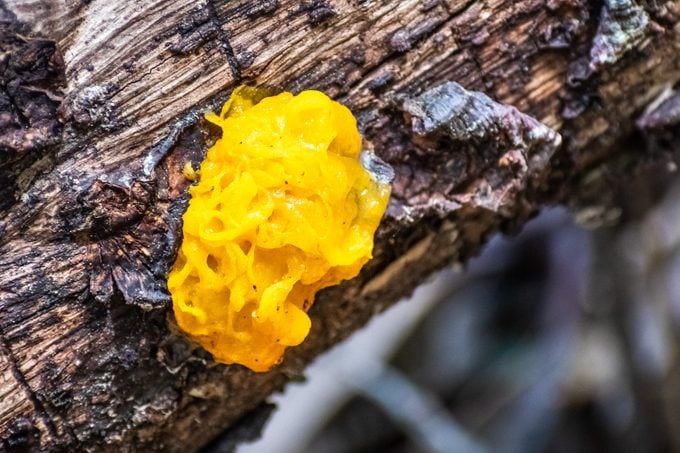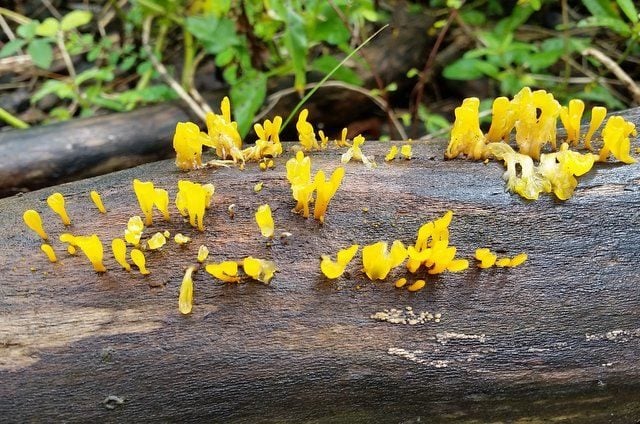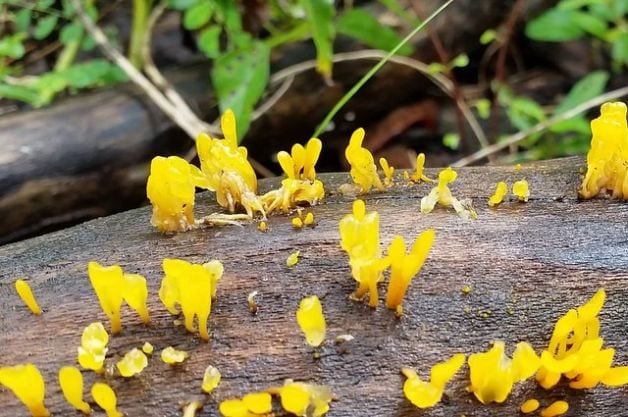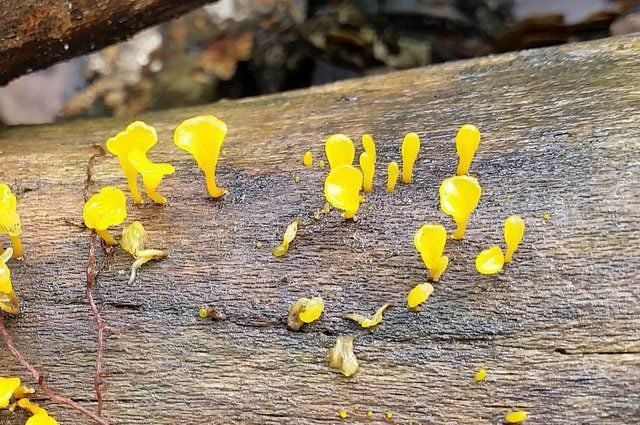All About Witches’ Butter Fungus
Updated: Oct. 26, 2023
Look for edible witches' butter fungus after heavy rains. This colorful fungus looks like bright yellow jelly emerging from dead logs.

Mid-August seems a bit early for talk of witches, but that’s not stopping the witches’ butter fungus from thriving in my neighborhood! After several recent days of non-stop rain, I came across a patch of witches’ butter growing on a dead log and was struck by the vivid yellow against the dark wood. We don’t always think of fungus or mushrooms as “pretty,” but witches’ butter is definitely eye-catching.
Find out why mushrooms grow in your lawn and garden.
What Is Witches Butter and What Does It Look Like?

Witches’ butter (Tremella mesenterica) is a common fungus found across temperate and tropical regions of the entire world. In its dry state, it’s a shriveled mass that may blend in with the wood and fallen leaves around it, but when revived by rain or newly-grown, the bright yellow color is hard to miss.
This is a jelly fungus, so even though it’s related to the more familiar mushrooms springing up nearby, it looks quite different. While this fungus may resemble soft gelatin or jelly, it’s actually pretty tough and rubbery. The surface is a bit slimy to the touch when wet, but it retains its shape when poked and prodded.

Look for witches’ butter on fallen logs; it doesn’t grow on live trees. This fungus is parasitic, consuming the wood on which it grows and helping to break down fallen limbs on the forest floor to form rich new soil. Like most jelly fungus, this one is edible, said to be bland but palatable once steamed or boiled. (Always take caution when consuming any fungus found in the wild.) The Chinese use it as an ingredient in soups.
Foraging for food: what you need to know.
Why Is This Fungus Called Witches’ Butter?

According to European legend, witches’ butter grows on the door frames of homes on which a witch has cast an evil hex. The only way to remove this hex is to pierce the fungus with a pin and drain its fluid.
Unfortunately, the fungus is likely to re-hydrate itself during the next spell of wet weather, which must have seemed ominous to those living in the house! The species epithet mesenterica means “intestine-like,” which kind of makes you want to re-think the edibility of this fungus.
Next, learn how to identify the spooky-looking hickory horned devil caterpillar.
